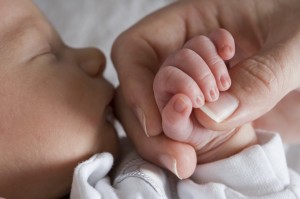Mild Cerebral Palsy in Children

Mild Cerebral Palsy
Cerebral palsy symptoms vary from person to person and can change over time for the better with therapy. One thing cerebral palsy doesn’t do is get worse. The brain damage which occurred and caused cerebral palsy produced the resulting symptoms for life. Severe cases of cerebral palsy may leave a person almost totally incapacitated, while people with mild or even moderate CP may need little specialized care.
Symptoms of mild cerebral palsy are generally easier to manage because the brain damage causing them isn’t as severe. Many children with mild cerebral palsy are diagnosed with the disorder much later than normal because the symptoms are less apparent.
While the symptoms of mild cerebral palsy are the same as more severe cases, they are often dismissed as problems that a child will “outgrow.” However, if there is any question your child is showing signs of a developmental delay, you should contact your pediatrician for further testing. Especially for mild cerebral palsy, early intervention can make a huge difference in later life.
Symptoms of Mild Cerebral Palsy
Children with mild cerebral palsy may have symptoms noticeable to parents but misinterpreted. For example, a child with mild cerebral palsy may delay talking. A parent may think the delay is due to a speech or hearing impediment, while it is actually due to cerebral palsy. Many mild cerebral palsy children are taken to health professionals by their parents for evaluation and are referred to a doctor specializing in cerebral palsy. Symptoms to watch for which might indicate mild cerebral palsy include:
- Walking on tiptoes (toe walking)
- Keeping arms raised or suspended in the air in a pose that looks like a teddy bear
- Bending arms or clenching fists unknowingly
- Generally lacks coordination or is considered excessively clumsy
- Cautious about many participating in activities requiring lots of movement
- Complains about leg pain after a normal amount of activity for other children
- Legs are very tight or seem to be constantly flexed
- The excessive effort required to walk or stand on the flat of the foot when reminded
Treatment for Mild Cerebral Palsy
Exercises are very helpful in the treatment of cerebral palsy. Once diagnosed, occupational therapy and physical therapy can help children gain more functionality in movement. High-top shoes help force the foot flat for toe walkers and offer extra support to the ankle joint. If the muscle contraction caused by cerebral palsy is noticeable but light, several oral medications like valium can be used to help with muscle relaxation. Botox injections into specific muscles can help temporarily weaken them for 3 to 4 months at a time.
Abilities of People with Mild Cerebral Palsy
Cerebral palsy affects each person differently, so it is hard to determine what one person might or might not be able to do. Many people with mild cerebral palsy can participate in almost any activity their peers do. Mild cerebral palsy sufferers will succeed more in some kinds of activities than others. For example, children with mild cerebral palsy are better steered toward participating in sports like martial arts or swimming. Sports like football, baseball, or basketball require much running, which can be difficult for people with cerebral palsy. Just as non-disabled people have different talents and difficulties, so do those with mild forms of cerebral palsy.
